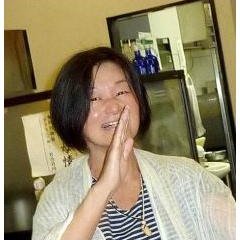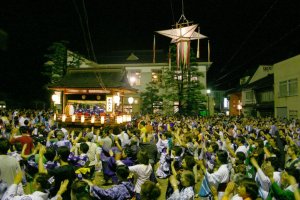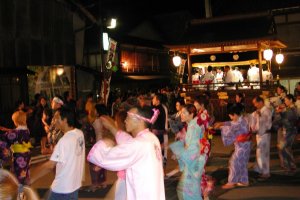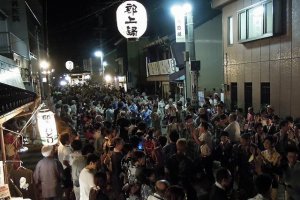Ever since I was a little girl the one Gujo event I looked forward to was the Gujo Odori. The downtown was closed off, stages were erected, strings of lights decorated the buildings, and oh the stalls of food, toys and sweets that lined the sides of the streets. It was magical! Even as a little girl, my parents would let me stay up late to participate in this thirty-two-night festival because it was Gujo tradition and culture dating back 400 years.
As the sun set, the lights came on and a sea of yukata-dressed neighbors, relatives and friends from around the world assembled around the main stage outside the old city hall (now tourism office) waiting for the festivities to begin. Then a voice sang, “Haru koma haru koma”, starting the dancing off. The sea of people began to flow in one direction in identical movements around the stage. The sound of clapping accompanied by the clog of geta (wooden shoes) compliment live music of shamisen, drum and voice providing a second percussive line.
Event details
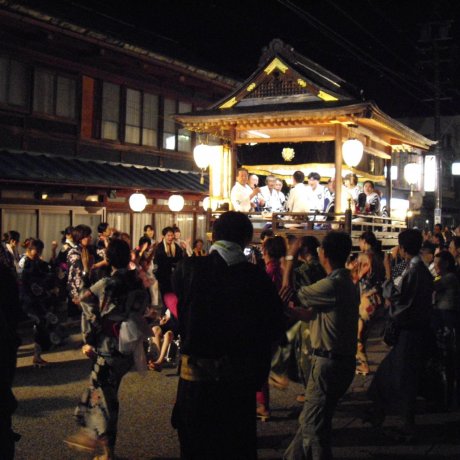
Gujo Odori 2026
Gujo Odori is Japan's largest and one of the most famous dance festivals lasting thirty-two nights, three of which have dancing..
For me, as a child, the dancing was something fun to participate in but, of course, the stalls glistening with delights of taiyaki, karaage, cotton candy, yakisoba, crushed ice, candied apples interlaced with brightly decorated stalls selling toys and challenging kids to catch goldfish with flimsy paper nets were like magnets to my eyes.
The Gujo Odori festival is held for a period of thirty-two nights starting in mid-July and ending in the beginning of September. The musicians' stage is carried by locals to a street in the downtown every day. If you would like to join them, just ask, "May I join you?" ("Watashimo issho ni yatte iidesuka?" - in Japanese) The Gujo locals will be happy! During the four days of Obon (Aug. 13-16), a time when we commemorate our ancestors, we don’t just dance for a few hours, but continue all night until the morning. Even the smallest of Gujo residents can be seen dancing and running around all night.
This is a 400-year old festival dating to the Edo Period. The feudal lord gathered all the people from the four different classes: warriors, farmers, artisans and tradesmen (in descending order of rank). He permitted them to intermingle with each others in order to dance during Obon. Over time, the dance festival became popular and became what is known now as Gujo Odori (dance).
There are 10 dances from the up-beat type to the slow paced one. There is no gender-based dance style in the Gujo dance. Some people dance elegantly, some people dance lightly for the same dance. It's up to you how you move. That is one of the fun parts of Gujo dance. There are also different stages and music flowing all through the streets so you can dance anywhere. If you really want to learn some moves before you go, you can take a short course taught by certified dance instructors at the Hakurankan. You can also just follow the people around you. The people of Gujo will teach you.
Now, many years and many festivals later, my husband and I walk with our daughter to the downtown area, the streets already flowing, to join in and introduce her to this important culture and tradition of our community.
If you come to Gifu in the summer, visit Gujo and join us for all-night dancing, eating, drinking and making friends. We would love to have you.

